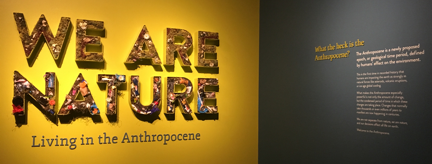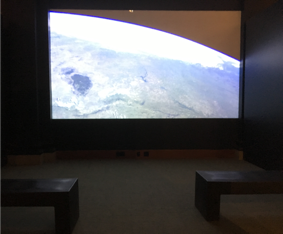Author: Kaitlyn Haynal Allen
PhD candidate in Comunication and Consuming Nature workshop participant
The Consuming Nature workshop exposed participants to the multitude of endlessly fascinating local resources of visual and material culture for learning about the presence of human influence across Pittsburgh landscapes. These resources have transformed not only my research, from which I now draw upon dozens of primary sources discovered through my participation in this workshop, but have radically transformed my teaching as well. Over the past year, consideration for place and environment has become significantly influential to my pedagogy of teaching and learning, and I have incorporated making use of these resources into my class instruction and assignments a primary objective.
On a typically cold and rainy Pittsburgh day in February, my two Argument classes were asked to visit and explore the Carnegie Museum of Art and Museum of Natural History, and select an artifact or exhibit for their critical consideration in an upcoming paper. They were given as much time as needed to wander through the expansive museum spaces and consider what artifacts drew their attention. In selecting the object(s) of their case study, students were asked to reflect on various questions: What are museums? What purpose do they serve? How and what do their exhibits communicate? Museum spaces shape public frames of the subject matter they collect and include in display, just as they shape public perception of what is excluded from their space.
The most discussed exhibit was the Carnegie Museum of Natural History’s We are Nature: Living in the Anthropocene. The introduction to the exhibit identifies that “our collections and research tell various stories of the human impact” on the environment, revealing “hard truths, inspiration, and human ingenuity in the face of the Anthropocene.” Students identified various themes present in communicating what the Anthropocene is and why it matters.
The dilemma of how a museum exhibit can effectively communicate to its various publics was a matter of great interest to several students. Taylor Jones, a junior Communication and English Literature major, argues that the exhibit “serves as a case study by which to examine notions of human-environment interconnectivity and cultural validity.” She ultimately concludes that, “We are Nature builds a sense of cultural validity through the popularization of climate change discourse and concepts, prioritizing ecological citizenship and environmental politics, and motivating children to carry on the legacy of working to mitigate the effects of climate change.”
Gabby Mineroff, a sophomore Media and Professional Communication major, considers the work museums put into targeting visitors who are children. Gabby ultimately argues that “when a child engages in a creative space they are passively parking in the ideology of the museum. For the Carnegie Museum’s Future Thinking Lab, the ideology of saving the environment is transmitted to the children when they partake in the activity.” The various publics that the museum seeks to reach in their exhibition of We are Nature were revealed to be diverse and varied. Another student examines the exhibit through the lens of ecofeminism and ecomaternalism, in order to demonstrate how the use of masculine colors and design features might encourage men to take action against environmental degradation.
To some students, the exhibit left possibilities of greater potential yet to be tapped. Johnny Yetter, a senior Chemistry major, focused on the Great Barrier Reef Funeral. In reflecting on his experience with the museum, he observes that “when I visited the We are Nature exhibit I expected to learn about my role in climate change and leave with a sense of urgency to do my part to help the environment; however, I left feeling under-informed and unsure of what steps, if any, I could take in order to become an environmental activist.” This was a prevalent concern among several students interested in better understanding: what would it take to get people to change their actions related to environmental action? Yetter concludes that while “the message was very information [sp] and could have helped any museum goer learn about this topic […] none of the words chosen induced urgency or hope, instead created a tone that was sad and hopeless.”
Overall the students shared the insight that human impact on the environment was a matter of significant concern that is worthy of public attention. Max Carter, a senior Psychology major, examined a component of the exhibit called the Overview Effect. One of the final observation points for visitors who walk through We are Nature from start to finish, the Overview Effect sums up the experience of the exhibit. “After viewing how air pollution has changed the color of moths from white to black, then back to white again; viewing the ridiculous amount of plastic we have put into the ocean; the list of animals we have made extinct as well as a handful that will soon become extinct; after a funeral service for one of the most unique natural sites in the world, the Great Barrier Reef, you reach a few dark benches and a large projector screen […] As you stare at the large blue patch that is the Atlantic Ocean, you think back to display noting how much plastic we’ve dumped there. You see the green land masses without any borders or lines and suddenly a lot of things feel less important. […] I found myself sitting there, suddenly disgusted by how we were treating both our planet and each other.”
Learn more about the Collecting Knowledge Pittsburgh initiative here


